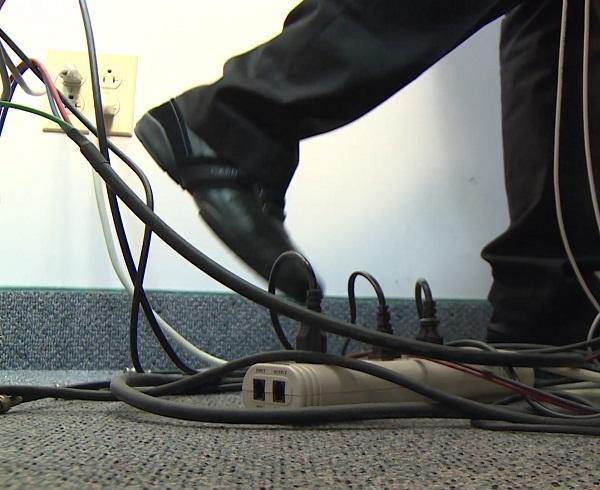Maintaining a clean and organized workplace is crucial for the safety and well-being of employees. It’s also important for productivity and the overall success of the business. However, many workplaces fall short when it comes to effective housekeeping. To help ensure that your workplace is clean, safe, and efficient, I’ve put together a list of my top 10 tips for effective workplace housekeeping.
- Establish a cleaning schedule. To ensure that the workplace stays clean, it’s important to establish a cleaning schedule. This schedule should be posted in a visible location and should include specific tasks, assigned areas, and a schedule of when each task should be completed. By having a set schedule, employees will know when they need to clean and what areas they are responsible for. This will also help to ensure that all areas of the workplace are cleaned on a regular basis and that cleaning is not overlooked. Additionally, a schedule can also help to ensure that cleaning is done at the same time every day, which can make it easier to plan and organize.
- Assign specific cleaning tasks. Assign specific cleaning tasks to different members of the staff. This will help to ensure that everyone is aware of their responsibilities and that the cleaning is done in a timely manner. By assigning specific tasks to different employees, it will make it clear who is responsible for which areas, and it will also ensure that tasks are done efficiently and effectively. Additionally, assigning tasks can also help to ensure that every area of the workplace is cleaned and that no area is overlooked.
- Provide proper cleaning equipment. Provide the necessary cleaning equipment such as brooms, mops, vacuums, and cleaning solutions. Make sure that the equipment is in good working condition and that it is cleaned and stored properly. Cleaning equipment is a necessary tool for maintaining a clean workplace, and with proper equipment, employees will be able to clean effectively. Keeping equipment in good working condition will also ensure that it will last longer and will not need to be replaced as often. Additionally, making sure equipment is cleaned and stored properly will ensure that it is ready to be used when it is needed.
- Keep walkways and exits clear. Keep walkways and exits clear of debris and other potential hazards. This will help to reduce the risk of accidents and injuries. By keeping walkways and exits clear, employees will have a safe and clear path to move around the workplace. This will reduce the risk of tripping and falling, and it will also ensure that emergency exits are clear and accessible in case of an emergency. Additionally, keeping walkways and exits clear will also ensure that employees can move around the workplace quickly and efficiently, which can increase productivity.
- Use color-coding. Use color-coding to help identify where certain items should be placed. This makes it easy to identify where different types of trash and recyclable materials should be placed. Color-coding is a simple and effective way to identify where certain items should be placed, and it can also help to reduce confusion and errors. By having a specific color for trash and recycling, employees will quickly be able to identify where items should be placed, which can help to speed up the cleaning process. Additionally, color-coding can also help to ensure that all items are placed in the correct location, which can help to reduce the risk of contamination.
- Label hazardous materials. Label hazardous materials such as chemicals and cleaning solutions to ensure that they are handled and stored properly. Labeling hazardous materials will help to ensure that employees are aware of the potential risks and how to handle and store the materials safely. This will reduce the risk of accidents and injuries, and it will also ensure that hazardous materials are not mishandled or misused. Additionally, labeling hazardous materials will also help to ensure that they are stored in the correct location and that they are easily identifiable in case of an emergency.
- Use signs. Use signs to help indicate where certain items should be placed and to remind employees of the importance of housekeeping. Signs can be used to indicate where certain items should be placed, such as trash, recycling, or hazardous materials. They can also be used to remind employees of the importance of housekeeping, such as to wear personal protective equipment or to follow proper cleaning procedures. This can help to ensure that employees are aware of their responsibilities and that they are following proper procedures. Additionally, signs can also be used to indicate potential hazards or areas that need attention, which can help to keep the workplace safe.
- Implement a “5S” system. The “5S” system is a methodology for maintaining a clean and organized workplace. It is borrowed from Lean Manufacturing principles. It includes Sort, Set in order, Shine, Standardize, and Sustain. This system helps employees to identify and eliminate unnecessary items, create designated areas for everything, and establish clear cleaning procedures. By implementing a “5S” system, employees will be able to identify and eliminate unnecessary items, which will reduce clutter and make it easier to clean. Additionally, by creating designated areas for everything and establishing clear cleaning procedures, employees will be able to work more efficiently and effectively.
- Encourage employee involvement. Encourage employees to take ownership of their work area and to report any hazards or areas that need attention. This will help to ensure that everyone is aware of the importance of housekeeping and that everyone is working together to maintain a clean and safe workplace. By encouraging employee involvement, it will help to ensure that everyone is taking responsibility for their work area and that everyone is aware of the importance of housekeeping. This will also help to create a culture of cleanliness and safety in the workplace, which can lead to increased productivity and job satisfaction. Additionally, by encouraging employees to report any hazards or areas that need attention, it can help to ensure that issues are addressed quickly and that the workplace remains safe.
- Inspect regularly. Regularly inspect the workplace to ensure that everything is clean, organized and that all safety procedures are being followed. Correct any issues that are found and take the necessary steps to prevent them from happening again. Regular inspections can help to identify any areas that need attention, such as dirty or cluttered areas, or areas where safety procedures are not being followed. This will help to ensure that the workplace
In conclusion, maintaining a clean and organized workplace is essential for the safety, productivity and overall success of any business. By implementing these tips, companies can ensure that their workplaces are safe, efficient, and well-maintained. Regularly scheduling cleaning, assigning specific cleaning tasks, providing proper cleaning equipment, keeping walkways and exits clear, using color-coding and labeling, using signs, implementing a “5S” system, encouraging employee involvement and inspecting regularly can help to ensure that the workplace is clean and safe. Remember, effective workplace housekeeping is not just about keeping things clean, it’s about creating a safe and productive environment for employees and customers.










